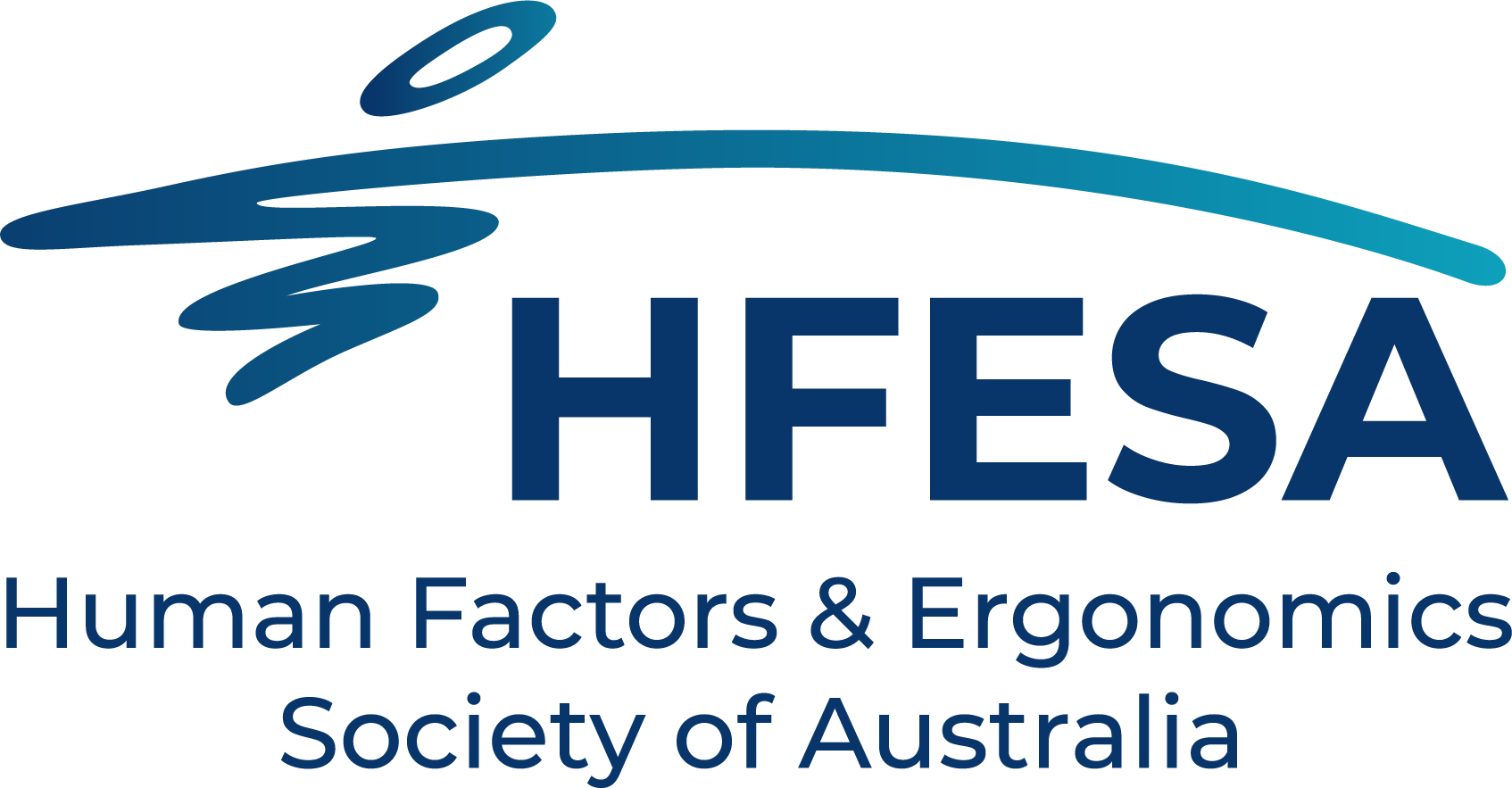The Ron Cumming Memorial Lecture is awarded annually at the HFESA Annual Conference for highly esteemed HFE-related research or application in a relevant area of HFE.
- Awarded to an Australian resident, preferably a member of the Society.
- The Award is in the form of a Medal inscribed with the recipient’s name, together with the presentation of the Cumming Memorial Lecture at the Society’s Annual Conference for the year of the award.
Past recipients
1990 Michael O’Connell
1991 David Meister
1992 Peter Vulcan
1993 Meredith Wallace
1994 Jim Joy
1995 Bill Green
1996 Gitte Lindgaard
1997 Roger Hall
1998 John Lane
1999 Verna Blewett
2000 Tom Triggs
2001 Maurice Oxenburgh
2002 Michael Patkin
2003 Lynn McAtamney
2004 Robin Burgess-Limerick
2005 Wendy MacDonald
2006 Barbara McPhee
2007 Mark Dohrmann
2008 David Caple
2009 Michael Regan
2010 Greg Ralph
2011 Andrea Shaw
2012 Leon Straker
2013 Ann Williamson
2014 Penelope Sanderson
2015 Not Awarded
2016 Paul Salmon
2017 Stephen Ward
2018 Jim Knowles
2019 Frank Vetere
About Ron Cumming
Ronald William Cumming graduated BE (Aero) in 1942 from the University of Sydney. Ron began work at the newly established Aeronautical Research Laboratories (ARL) in applied aerodynamics. In the immediate post-war years he was head of the group working on the Griffith suction wing and had managerial responsibility for the wind tunnel. He spent 1949 in England at the National Physical Laboratory.
In 1956, ARL began undertaking research into operational aspects of aviation, what we would now call ergonomics. Ron was chosen to lead this new venture called the Human Engineering Group. The first operational problem he selected was the then-common, undershoot landing accident, which plagued large aircraft. This project eventually led to the T-VASIS landing aid, now used in this and other pacific countries. This work was recognised by the 1971 Prince Phillip Prize in Industrial Design and the 1974 Diploma d’Honneur of the Federation Aeronutique Internationale. An early paper foreshadowed the head-up display now standard on most military and some airline aircraft. It was about this time that Ron decided that piloting experience would provide necessary insights into operational problems and he undertook training leading to a commercial pilot licence.
In 1959, Ron studied with Paul Fitts at the University of Michigan in a much sought after graduate program. He was the first non-psychologist to be accepted. After one year, he returned with an AM and a wide knowledge of experimental psychology. This year’s work was to be the springboard for a second and third career.
On his return in 1960, Ron found himself associated with a small group of professionals, from a number of disciplines, who were concerned with applying the scientific method to the worsening problem of road accidents. He became a founding member and founding Chairman of the Human Factors Committee of the new Australian Road Research board. He conducted and supervised research for the Board over a number of years. Later, in a period of 11 years, he spent much time and effort on the successive committees which drafted the safety design rules for motor vehicles.
Upon the dispersion of the ARL, Ron moved to a Readership in the Department of Mechanical Engineering at the University of Melbourne. One of his commitments was the exposure of students from engineering, science, architecture, psychology and optometry to the elements of ergonomics. Work continued on road research projects. One of his theoretical innovations was the demonstration of a hysteresis effect in serial tasks.
His time at Melbourne continued until 1971, when, in a major shift in his career, he moved to a chair of psychology at Monash. Again transportation research was carried out: a major project for the Department of Transport concerned driver behaviour in relation to accidents. New interdisciplinary courses were developed, a notably successful one being decision-making in groups and society. He twice served as chairman of the Department of Psychology for extended periods.
From Monash he made a final change in direction – to academic management. From 1979 to 1982 he was Director of the Chisholm Institute of Technology (CIT). He gave strong support to the cause of engineering at CIT, then under some threat, and stimulated the introduction of areas in Industrial Engineering, Robotics and Digital Technology. His most difficult task concerned the amalgamation of CIT and Frankston State College.
His final appointment was as Visiting Professor in the University of Melbourne. He was also the first Australian Fellow of the (American) Human Factors Society. He was a founding member and early President (later a Fellow) of HFESA. He served on the Council of RMIT, on the Advisory Council of CSIRO and on a number of other bodies. He was appointed, in 1973, as one of the three Commissioners of the short-lived Road Safety and Standards Authority.
Ron was a man of broad interests and great ability. He had achievements in technological research in two distinct fields, in teaching, again in different disciplines, and in academic administration. His energy and enthusiasm inspired all who had the good fortune to work with him. Ron was elected to the Australian Academy of Technological Sciences and Engineering and in the Doctorate of Engineering (honoris causa) conferred on him, in 1983, by the University of Melbourne.
